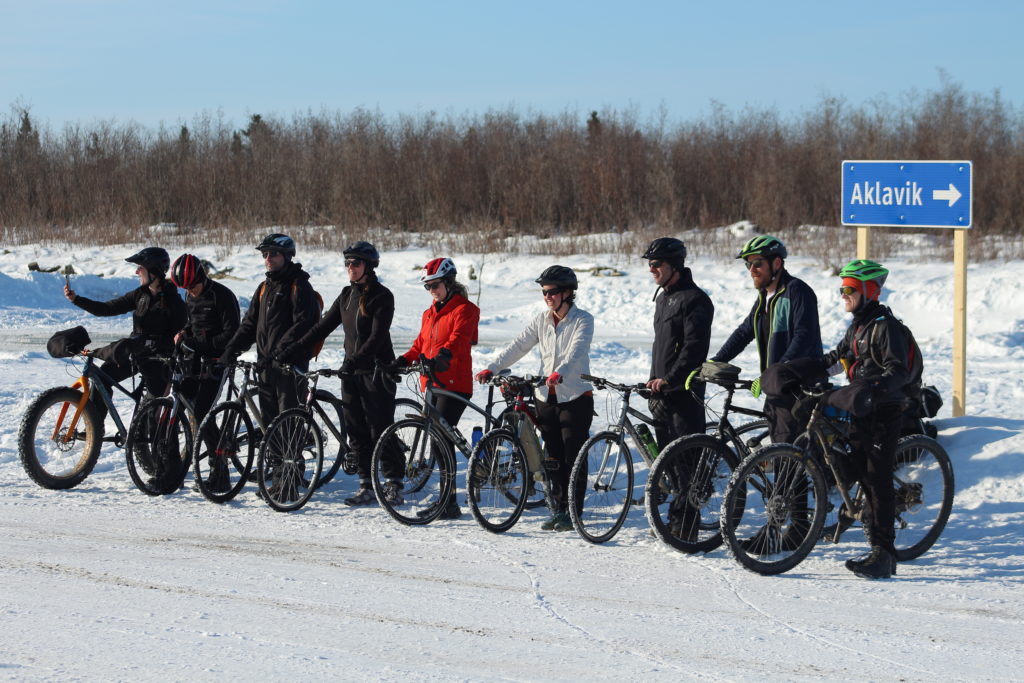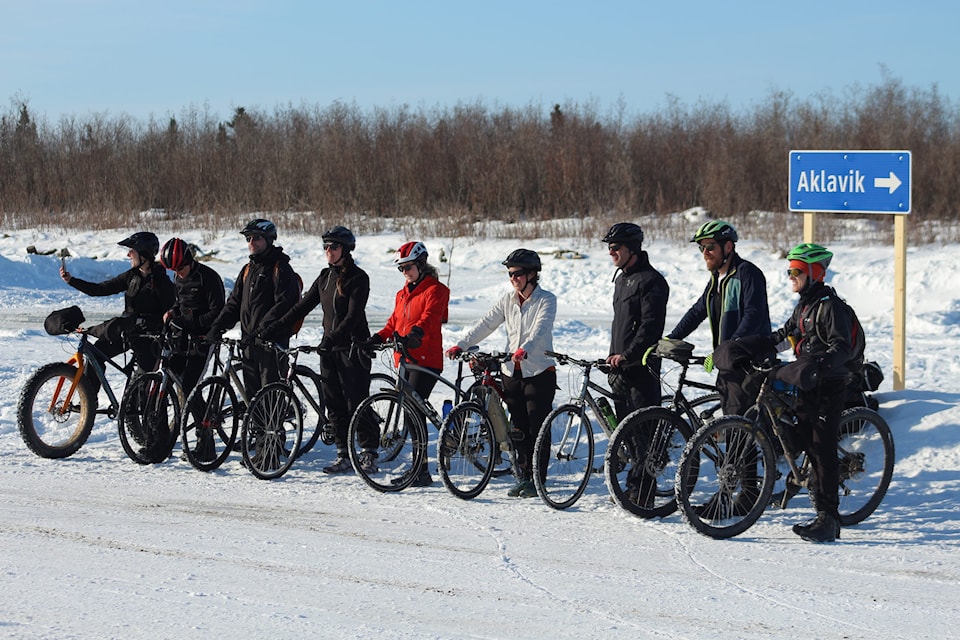They say Aklavik is 30 kilometres from Inuvik as the crow flies. Using the ice road, built over several cross sections of the Mackenzie River, that journey becomes a 118 kilometre drive. A 20-minute flight can take well over an hour in your average vehicle.
But on a bicycle? Ten brave souls found out on April 18 as the first-ever Aklavik Ice Breaker hit the road. An 11th was there in spirit, Matt Hamilton, whom the trek was held in memory of.
”I think it will go better than we expect. The conditions are so favourable.” said co-organizer Chris Bruckner, who initially planned to make the journey with his late-friend. “It was sort of our dream to put a ride like this together. Sadly, he passed, so I figured I would organize this event along with the Inuvik Cycling Club and do the ride in his honour.
“It was primarily Matt’s idea, but sadly he could not be here to participate.”
Hamilton died from suicide in February. His death really affected Bruckner, so he dedicated the trip the pair wanted to go on to mental health awareness.
Bruckner, who already holds the world record for the fastest time across Canada on a bicycle, said the underlying purpose of the day was to raise awareness about mental health and work to end the stigma around talking about it.
He said Hamilton contributed more than just inspiration, however.
After his death, all four of his bikes went to Bruckner, so he brought them along for his fellow cyclists who may not have ice-road worthy bicycles of their own.
As one might expect, cycling on solid ice presents some unique challenges. Studded tires are a must in case you hit a bare patch of ice. Helmets are mandatory and the bike needs to be in good working order. Hence why Bruckner donated Hamilton’s rides to cyclists.
An itinerary written by co-organizer Mike Lee advises cyclists to have a thicker layer to wear when stopping for breaks, as the river serves as a channel for icy winds. It also advises cyclists to wiggle their fingers and toes while biking to keep blood flowing, as it is easy to let them get cold if not paying attention. Finally, it advises against wearing cotton as a base-layer because it absorbs sweat, and suggests wearing padded shorts because bike seats get uncomfortable after 30 or more kilometres.
Bruckner added the big thing they needed to be on alert for was the wetness of the melting top layer. Cyclist stuck to the snowy parts of the road, which was already beginning to revert to its summer stage.
“Even if it’s five degrees, if you’re wet and you’re a little bit cold, that could make for a miserable day,” said Bruckner. “I’ve been there, and that really sucks.”
To mitigate risks and fatigue, the group made the trek in two hour blocks, with breaks in between, averaging from 15 to 20 kilometres at a time. Three support vehicles laid checkpoints for the cyclists and kept an eye on the group in case of emergencies. Spare bikes were also on hand in case someone’s equipment broke down. With three rest-stops, Bruckner expected the trip to take six to eight hours.
Bruckner said the group pulled into Aklavik shortly after 9 p.m., meaning the journey took 11 hours from start to finish.
“Mentally, 120 kilometres seems like a long way, and it is. But when you think of it in terms of having three or four two-hour blocks, it becomes a little less daunting,” said Bruckner. “Everybody finishes together. It’s not a race.”

